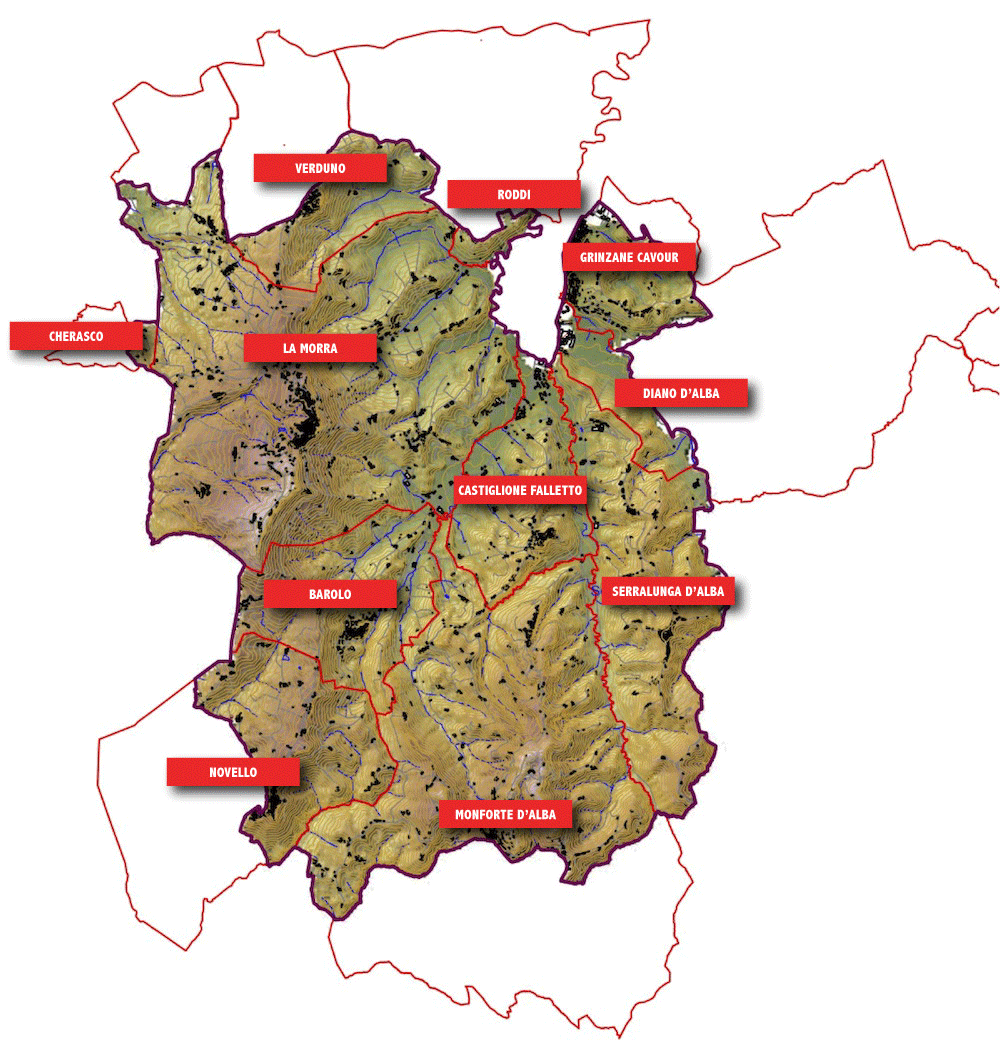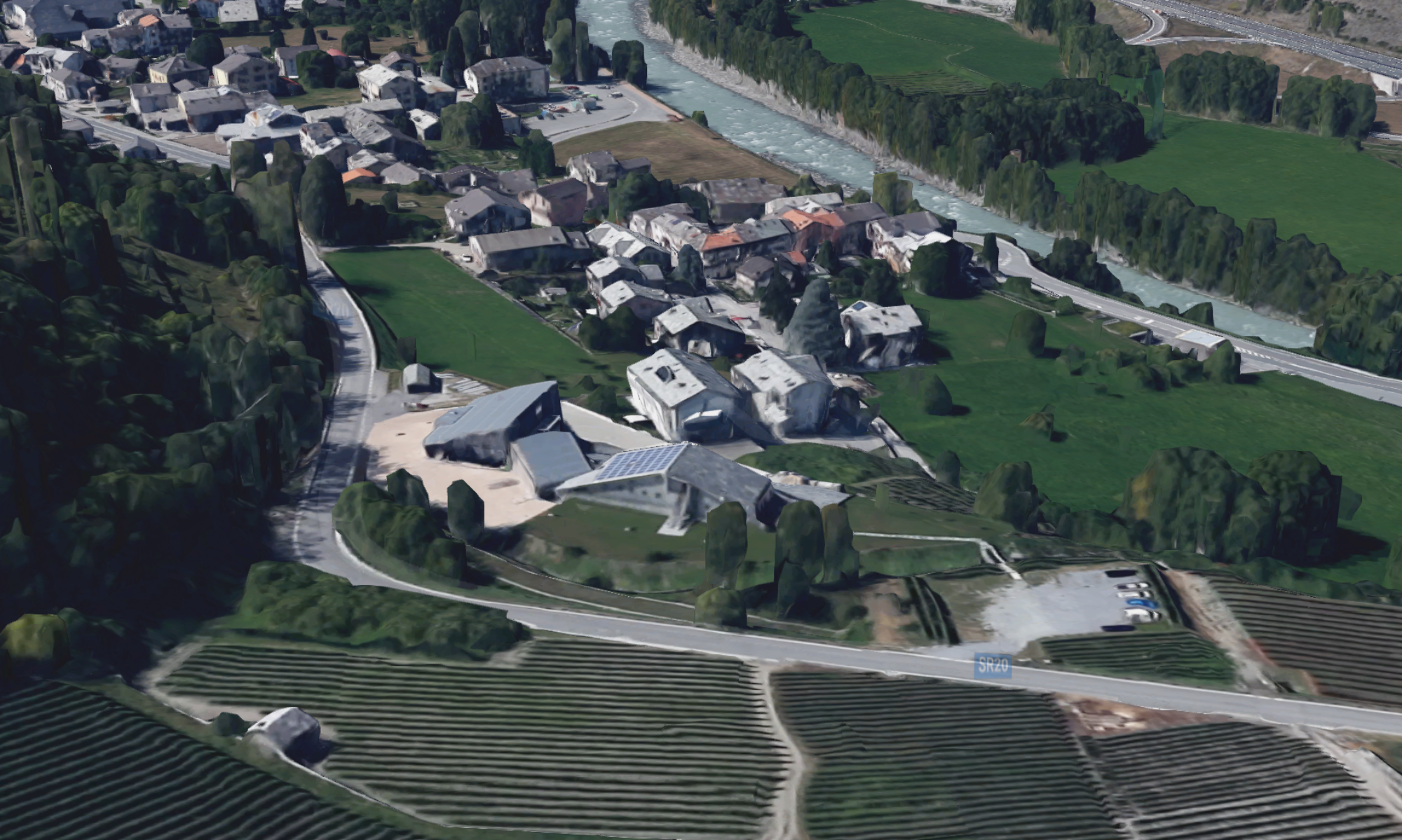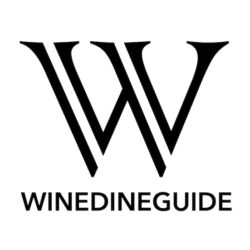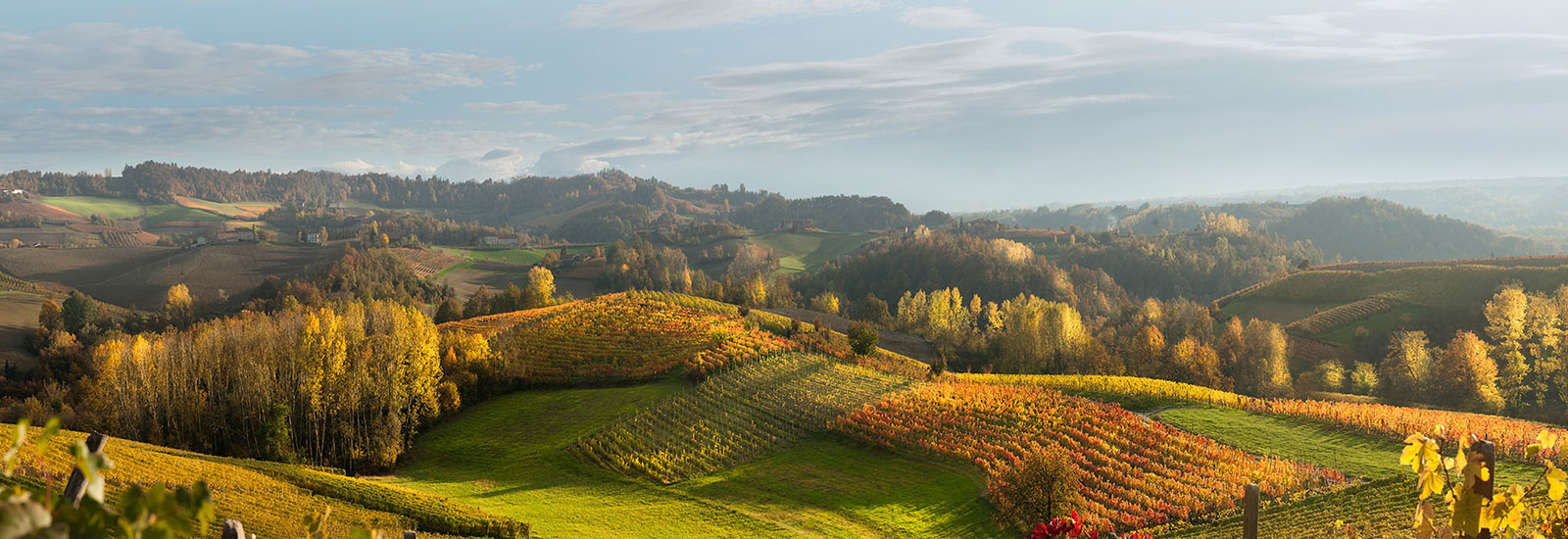Barolo DOCG, produced from Nebbiolo grapes, comes from the province of Cuneo in Piedmont
Eleven communes with 500 plus members, make up the Barolo area: Barolo, Castiglione Falletto, La Morra, Monforte d’Alba, Serralunga d’Alba and some parts of the communes of Cherasco, Diano d’Alba, Grinzane Cavour, Novello, Roddi and Verduno.
The Vine
A listing of the Barolo Communes and the Vineyards where the Barolo Grand Crus are produced
The Nebbiolo vine requires a south or southwest-facing hillside, for the right formation of tannins and an altitude of between 650 and 1,500 feet above sea level, where spring frosts rarely occur. The vine buds in mid April and ripens around the middle of October. Nebbiolo is the oldest indigenous red-grape vine of Piedmont. Nebbiolo derives from “nebbia”, Italian for fog.
In the 1970s and 1980s trends in the worldwide market favored fruitier, less tannic wines that could be consumed at a younger age. A group of Barolo producers, led by the house of Ceretto, Paolo Cordero di Montezemolo, Elio Altare, and Renato Ratti, started making more modern, international styles of Barolos by using shorter periods for maceration (days as opposed to weeks) and fermentation (usually 48–72 hours or at most 8–10 days), less time aging in new small oak barrels and an extended period of bottle aging prior to release.
Few wineries evoke excellence and artistry the way the Gaja family name does. To utter these two simple syllables is to call forth one of the greatest and most venerated traditions in European winemaking. To mention this family and its wines is to summon an icon and touchstone of Italian viticulture.
The Wine
Barolo is required by DOCG regulations, to age for a total of 38 months, includes 18 months in wood, starting on November first. If Barolo is aged for 62 months, includes 18 months in wood, it’s called Barolo Riserva. Barolo cannot be made available to the consumer prior to January first of the fourth year of its harvest, while for Barolo Riserva its the sixth year from its harvest, again after January first.
The color of Barolo is an intense garnet red with fruity and spicy perfumes. Red berries, cherries, roses, violets, cinnamon, pepper, nutmeg, vanilla and at times, licorice, cocoa, tobacco and leather, are present both in the nose and in the mouth.
In the mid 19th century, Barolo was a sweet wine, because it was a late harvest grape
But the mayor of Grinzane Cavour, Camillo Benso, Count of Cavour, a municipality in the Province of Cuneo summoned Louis Oudart, French enologist to the region to enhance winemaking procedures. Oudart was able to ferment the Nebbiolo must completely dry; the maceration and fermentation process took around three weeks. Today fruitier, earlier drinking wines are preferred and winemakers have decreased fermentation times hence creating earlier drinkable wines.
The Barolo area is divided into east and west
The Central Valley to the east is made up of Tortonian soil that creates more approachable wines characterized by rose and violet fragrances with a distinguished softness and elegance and the Serralunga Valley to the west, consists of Helvetian soil which generally creates long lived, powerfully concentrated wines that mature slowly.
The Tortonian soil is darker in color with compact calcareous marl mixed with sand and rich in magnesium and manganese. The Helvetian soil is lighter in color with looser calcareous marl soil, less fertile and rich in iron and phosphorous.
A listing of the Barolo Communes and the Vineyards where the Barolo Grand Crus are produced
Barolo
Albarella, Bergeisa, Boschetti, Bricco delle Viole, Bricco San Giovanni, Brunate, Cannubi, Cannubi Boschis, Cannubi Muscatel, Cannubi San Lorenzo, Cannubi Valletta, Castellero, Cerequio, Coste di Rose, Coste di Vergne, Crosia Druca’, Fossati, La Volta, Le Coste, Liste, Monrobiolo di Bussia, Paiagallo, Preda, Ravera, Rivassi, Rue’, San Lorenzo, San Pietro, San Ponzio, Sarmassa, Terlo, Vignane, Zoccolaio, Zonchetta, Zuncai.
Castiglione Falletto
Altenasso, Garblet Sue’, Garbelletto Superiore, Bricco Boschis, Bricco Rocche, Bricco Vigna Mirasole, Brunella, Codana, Fiasco, Mariondino, Monriondino or Rocche Moriondino, Monprivato, Montanello, Parussi, Pernanno, Pianta’, Pira, Pugnane, Rocche di Castiglione, Scarrone, Solanotto, Valentino, Vignolo, Villero.
La Morra
Annunziata, Arborina, Ascheri, Berri, Bettolotti, Boiolo, Brandini, Bricco Chiesa, Bricco Cogni, Bricco Luciani, Bricco Manescotto, Bricco Manzoni, Bricco Rocca, Bricco San Biagio, Brunate, Capalot, Case Nere, Castagni, Cerequio, Ciocchini, Conca, Fossati, Galina, Gattera, Giachini, La Serra, Rive, Rocche dell’Annunziata, Rocchettevino, Roere di Santa Maria, Roggeri, Roncaglie, San Giacomo, Santa Maria, Sant’Anna, Serra dei Turchi, Serradenari, Silio, Torriglione.
Monforte d’Alba
Bricco San Pietro, Bussi,a Castelletto, Ginestra, Gramolere, Le Coste di Monforte, Mosconi, Perno, Ravera di Monforte, Rocche di Castiglione, San Giovanni
Serralunga d’Alba
Arione, Badarina, Baudana, Boscareto, Brea, Bricco Voghera, Briccolina, Broglio, Cappallotto, Carpegna, Cerrati, Cerretta, Collaretto, Colombaro, Costabella, Damiano, Falletto, Fontanafredda, Francia, Gabutti, Gianetto, Lazzarito, Le Turne, Lirano, Manocino, Marenca, Margheria, Meriame, Ornato, Parafada, Prabon, Prapo’, Rivette, San Bernardo, San Rocco, Serra, Teodoro, Vignarionda.


